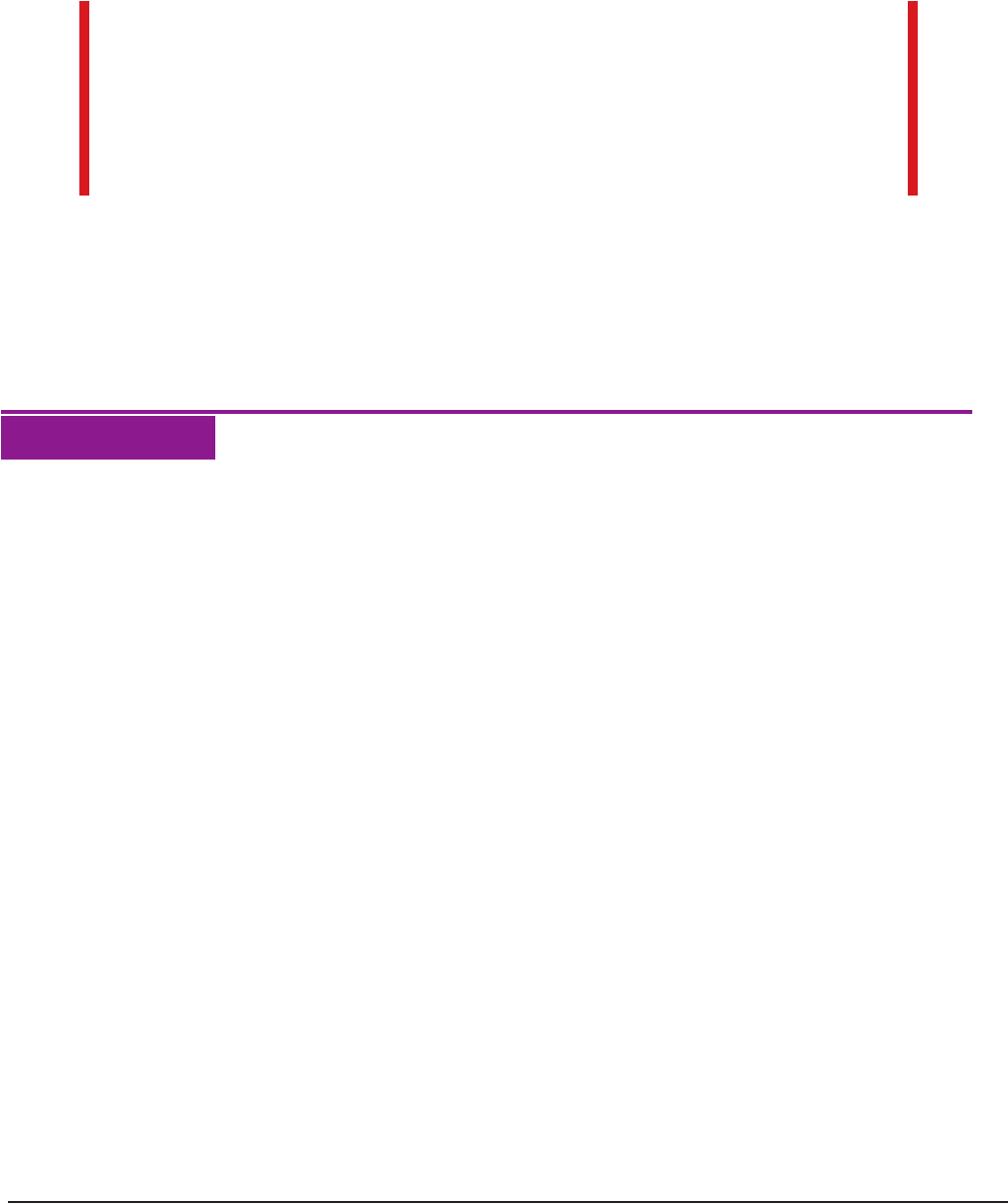
Comparative Analysis
Unit: Critical Thinking and Analysis
Problem Area: Financial Information Interpretation
Lesson: Comparative Analysis
¢
Student Learning Objectives.
Instruction in this lesson should result in students
achieving the following objectives:
1
Analyze internal financial performance comparing like time periods.
2
Evaluate financial performance across industry competitors.
¢ Resources.
The following resources may be useful in teaching this lesson:
E-unit(s) corresponding to this lesson plan. CAERT, Inc. http://www.mycaert.com.
“Financial Statement Analysis Primer,” Wiley. Accessed Aug. 18, 2016.
http://www.wiley.com/college/kieso/0470587237/gateway_ics/
Financial_Statement_Analysis_Primer/analysis_primer.html.
“Horizontal Analysis of Financial Statements,” Accounting for Management.org. Accessed
Aug. 18, 2016. http://www.accountingformanagement.org/horizontal-analysis-of-
financial-statements/.
“What Is the Difference Between Vertical Analysis and Horizontal Analysis?” Accounting
Coach
®
. Accessed Aug. 18, 2016. http://www.accountingcoach.com/blog/vertical-
analysis-horizontal-analysis.
Wilkinson, Jim. “Comparison Analysis,” The Strategic CFO. Accessed Aug. 18, 2016.
http://strategiccfo.com/comparison-analysis/
.
Lesson: Comparative Analysis
Page 1 u www.MyCAERT.com
Copyright © by CAERT, Inc. | Reproduction by subscription only. | L770033

¢
Equipment, Tools, Supplies, and Facilities
ü
Overhead or PowerPoint projector
ü
Visual(s) from accompanying master(s)
ü
Copies of sample test, lab sheet(s), and/or other items designed for duplication
ü
Materials listed on duplicated items
ü
Computers with printers and Internet access
ü
Classroom resource and reference materials
¢
Key Terms.
The following terms are presented in this lesson (shown in bold italics):
>
accounting period
>
accounts receivable turnover ratio
>
accrual basis of accounting
>
balance sheet
>
cash flow statement
>
comparative analysis
>
competitor analysis
>
current assets
>
current liabilities
>
current ratio
>
dividends
>
drawing
>
efficiency ratio
>
financial ratio
>
financial statement
>
horizontal analysis
>
income statement
>
inventory turnover ratio
>
liquidity ratio
>
market share
>
owner contributions
>
profit margin ratio
>
profitability ratio
>
statement of cash flows
>
statement of owner’s equity
>
statement of retained earnings
>
trend analysis
Lesson: Comparative Analysis
Page 2 u www.MyCAERT.com
Copyright © by CAERT, Inc. | Reproduction by subscription only. | L770033

¢
Interest Approach.
Use an interest approach that will prepare the students for the
lesson. Teachers often develop approaches for their unique class and student situations. A
possible approach is included here.
Ask your students the following: How do you monitor your progress as a
student? Do you look only at the grade you have in a class today, or do you
compare your grade today with what it has been in previous grading periods? If
you have moved from a “C” to a “B” in a class, you would be sure to tell your
parents you are doing better. Businesses will likewise compare current
performance with performance from the past. A common way to do this is by
using financial statements for comparative analysis.
CONTENT SUMMARY AND
TEACHING STRATEGIES
Objective 1: Analyze internal financial performance comparing like time periods.
Anticipated Problem: What methods are used to analyze internal financial performance
using like time periods?
I. Financial performance comparisons over time
A. Comparative analysis is a method of conducting a side-by-side appraisal of
financial data for multiple accounting periods of the same type (e.g., month,
quarter, or year). In accounting, comparative analysis can identify budget
variances, trends, or significant line item changes. To detect emerging trends in
the company, an accountant examines financial statement line items from one
period to the next and investigates any notable differences to identify and project
changes in operations and results.
B. A financial statement is a series of reports that summarize the business’s
financial results, condition, and cash flows. The financial statements of a company
tell the story of the company’s operations and financial health.
1. Financial statements are used to:
a. Determine whether or not to extend credit to a business
b. Decide whether or not to invest in a business
c. Track the financial performance over a period of time
d. Track financial trends
2. The four primary business financial statements are the balance sheet, income
statement, statement of cash flows, and statement of owner’s equity.
a. The balance sheet is the part of the financial statement that reports the
assets, liabilities, and owner’s equity at a specific point in time. In essence,
Lesson: Comparative Analysis
Page 3 u www.MyCAERT.com
Copyright © by CAERT, Inc. | Reproduction by subscription only. | L770033

the balance sheet reflects the accounting equation: Assets = Liabilities +
Owner’s Equity.
b. The income statement is the part of the financial statement that reports a
company’s financial performance over a specific period of time. The income
statement is also referred to as the profit and loss statement or P&L. The
income statement may be simple and report on income and expenses, or it
may include computations of costs of goods sold (COGS) and
subcategories of expenses. On the income statement, expenses are
subtracted from revenue to calculate the net income or net loss for the
period. The accounting period is the timeframe for which the company is
reporting the results of its operations. The accounting period is usually a
month, a quarter (three months), or one year.
c. The statement of cash flows is the part of the financial statement that
reports the inflow and outflow of cash for the accounting period of the
income statement: operating activities, investing activities, financing
activities, and certain supplemental information for the period. The
statement of cash flows is also known as the cash flow statement.It
contrasts the income statement, which presents net income or net loss on
the accrual basis of accounting. The accrual basis of accounting is a
system that matches revenues and expenses based on when they occur,
not when cash is exchanged. Therefore, the income statement does not
display the actual cash generated and used. Instead, it displays revenues
and expenses.
d. The statement of owner’s equity is the part of the financial statement
that reconciles changes in the retained earnings account for a corporation.
Owner’s equity changes are reported as follows:
Beginning Owner’s Equity
+ Owner Contributions
+ Net Income or – Net Loss
–
Owner Withdrawals (drawing or dividends)
Ending Owner’s Equity
C. Owner contributions are types of capital investment (e.g., money or assets).
1. For a corporation, owner contributions are from purchases of capital stock, and
this statement of owner’s equity is called the statement of retained earn
-
ings.
2. For a sole proprietorship and for a partnership, owner withdrawals are referred
to as drawing. For a corporation, owner withdrawals are dividends.
D. Horizontal analysis
1. One method companies use to compare financial performance is to look at
financial statements from one time period to another. Decision-makers com
-
pare financial statement line items from one month to another, from quarter to
quarter, or from year to year. Typically, comparisons are made for like time
Lesson: Comparative Analysis
Page 4 u www.MyCAERT.com
Copyright © by CAERT, Inc. | Reproduction by subscription only. | L770033

periods. Quarterly numbers should not be compared to monthly or annual
numbers. In addition, monthly numbers should not be compared to quarterly or
annual numbers.
2. Horizontal analysis is the comparison of financial information over a series of
historical periods.
a. Income statement analysis: Typically, horizontal analysis of an income
statement involves comparing two years of income statements side by side
with a third column to report the variance between the two years. For
example:
(1) Sales are reported for the year ending Dec. 31, 2016, as $50,000.
Sales are reported for the year ending Dec. 31, 2015, as $45,000.
Comparison shows a positive variance of $5,000.
(2) Statement users would note that sales had increased by 11 percent
((50,000 – 45,000) ÷ 5,000). The same process is completed for
each line item of the income statement.
b. Balance sheet analysis: The horizontal analysis of the balance sheet is
performed in the same manner as for the income statement. Two years of
balance sheets are presented side by side, with a third column to report
the variance.
3. Trend analysis is a method to compare the same item (e.g., weekly sales fig-
ures or monthly sales figures) over a long period. Then trend lines are drawn
for the key item in the financial statements over several accounting periods.
Trend lines are frequently drawn for revenues, expenses, net income, and
debt. Trend analysis helps to:
a. Detect patterns between factors or variables
b. Project future pattern direction
E. Asking “Why?”
1. It is not enough to compile comparative financial statements, calculate vari-
ances, and draw trend lines. A key step to analysis is to ask questions about
the variances and trends.
2. Financial statement users analyze the variances and ask why the variances
occurred. They may decide to conduct a detailed analysis of a specific general
ledger account to determine the transactions that made up the variance.
3. Decision-makers are able to determine what caused the trends detected by
the comparisons and whether the data supports the continuation of the trend.
Teaching Strategy:
Many techniques can be used to help students master this
objective. Use VM–A and VM–B.
Lesson: Comparative Analysis
Page 5 u www.MyCAERT.com
Copyright © by CAERT, Inc. | Reproduction by subscription only. | L770033

Objective 2: Evaluate financial performance across industry competitors.
Anticipated Problem: How is financial performance evaluated across industry
competitors?
II. Financial performance evaluation
A. Competitor analysis is the process of evaluating strategies, strengths, and
weaknesses related to a common product or service, typically as part of a
marketing plan. Competitor analysis is a method to analyze a company’s financial
performance by making comparisons to others in the same industry. It is similar to
being at the produce section of a grocery store. If a person wants to buy the best
quality apple based on taste, appearance, crunch, and color, the shopper
compares several types of apples (e.g., Fugi, Gala, Granny Smith, and Red
Delicious). However, that shopper would not compare an apple to types of
oranges to determine apple quality. Competitor analysis is conducted with like
businesses in the same industry. In business, different industries have different
operating structures that may put constraints on profitability or other margins.
Several ways exist to make comparisons from one like competitor to another,
including:
1. Market share is a business’s sales in a market compared to the total sales in
that market. It is typically reported as a percentage of total sales. A business
compares its own market share to its closest competitors. Market share
involves capturing new customers to the market and maintaining current
customers.
2. Innovation may be compared as a variable of competitor analysis. For
instance, is the business generating new products or processes in the market-
place before its competitors? Is the business considered an industry leader in
innovation and production?
B. A financial ratio is a computation that indicates a company’s performance and
monetary situation; it helps people conduct comparative analysis.
1. A financial ratio is calculated based on financial statement figures. Ratios are
proportional to the business that allows small or large businesses to compare
financial information. Common financial ratio comparisons made within an
industry are liquidity, profitability, and efficiency ratios.
a. A liquidity ratio is a proportional relation that measures a company’s
ability to pay off debts as they become due. The current ratio is a
proportional ratio that measures a company’s ability to pay off current
liabilities with current assets. It is calculated as: Current Ratio = Current
Assets ÷ Current Liabilities.
(1) Current assets are resources that can easily be converted to cash.
(2) Current liabilities are obligations due within the next year.
b. A profitability ratio is a proportional relation that measures a company’s
ability to generate profits from its operations. A common profitability ratio
used for comparisons is the profit margin ratio—a proportional relation
Lesson: Comparative Analysis
Page 6 u www.MyCAERT.com
Copyright © by CAERT, Inc. | Reproduction by subscription only. | L770033

that measures how much profit will be generated from each dollar of sales.
It measures how effectively the company converts sales into net income
and is calculated as: Profit Margin Ratio = Net Income ÷ Net Sales.
c. An efficiency ratio is a proportional relation that measures how well a
company uses its assets to generate income.
(1) An accounts receivable turnover ratio is a proportional relation that
measures how many times a business can turn its accounts
receivable into cash. It is calculated as: Accounts Receivable Turnover
Ratio = Net Credit Sales ÷ Average Inventory.
(2) An inventory turnover ratio is a proportional relation that measures
how many times average inventory is sold during the period. It is
calculated as: Inventory Turnover Ratio = Cost of Goods Sold ÷
Average Inventory.
2. Many additional financial ratios may be used to make comparisons within an
industry. Financial statement users compare one company’s financial ratio to
another company’s financial ration within the industry to determine which one
is performing better. In addition, the ratios may be compared to industry aver
-
ages to determine whether or not the company is performing at, above, or
below the industry as a whole.
Teaching Strategy:
Many techniques can be used to help students master this
objective. Use VM–C. Assign LS–A.
¢ Review/Summary.
Use the student learning objectives to summarize the lesson.
Have students explain the content associated with each objective. Student responses can
be used in determining which objectives need to be reviewed or taught from a different
angle. If a textbook is being used, questions at the ends of chapters may be included in
the Review/Summary.
¢
Application.
Use the included visual master(s) and lab sheet(s) to apply the
information presented in the lesson.
¢
Evaluation.
Evaluation should focus on student achievement of the objectives for the
lesson. Various techniques can be used, such as student performance on the application
activities. A sample written test is provided.
¢
Answers to Sample Test:
Part One: Matching
1. d
2. e
3. c
4. a
Lesson: Comparative Analysis
Page 7 u www.MyCAERT.com
Copyright © by CAERT, Inc. | Reproduction by subscription only. | L770033

5. f
6. b
Part Two: Completion
1. market share
2. financial ratios
3. accounting period
4. current assets
5. horizontal analysis
6. current liabilities
Part Three: Short Answer
Answers will vary but should be similar to the following: Comparative analysis is a
method of conducting a side-by-side appraisal of financial data for multiple accounting
periods of the same type (e.g., month, quarter, or year). In accounting, comparative
analysis can identify budget variances, trends, or significant line item changes. To
detect emerging trends in the company, an accountant examines financial statement
line items from one period to the next and investigates any notable differences to
identify and project changes in operations and results.
Lesson: Comparative Analysis
Page 8 u www.MyCAERT.com
Copyright © by CAERT, Inc. | Reproduction by subscription only. | L770033

Sample Test
Name ________________________________________
Comparative Analysis
u
Part One: Matching
Instructions: Match the term with the correct definition.
a. accounts receivable turnover ratio d. liquidity ratio
b. inventory turnover ratio e. profitability ratio
c. efficiency ratio f. trend analysis
_____1. A proportional relation that measures a company’s ability to pay off debts as they
become due
_____2. A proportional relation that measures a company’s ability to generate profits from its
operations
_____3. A proportional relation that measures how well a company uses its assets to generate
income
_____4. A proportional relation that measures how many times a business can turn its accounts
receivable into cash
_____5. A method to compare the same item (e.g., weekly sales figures or monthly sales
figures) over a long period
_____6. A proportional relation that measures how many times average inventory is sold during
the period
u
Part Two: Completion
Instructions: Provide the word or words to complete the following statements.
1. A business’s sales in a market compared to the total sales in that market is
_________________________.
Lesson: Comparative Analysis
Page 9 u www.MyCAERT.com
Copyright © by CAERT, Inc. | Reproduction by subscription only. | L770033

2. Computations from financial statements used for comparisons are
_________________________.
3. The timeframe for which the company is reporting the results of its operations is the
_________________________.
4. Assets that can easily be converted to cash are termed _________________________.
5. Comparing financial information over a series of historical periods is called
_________________________.
6. Liabilities due within the next year are termed _________________________.
u
Part Three: Short Answer
Instructions: Answer the following.
What is your “walking definition” (a description in your own words) of comparative analysis in
accounting?
Lesson: Comparative Analysis
Page 10 u www.MyCAERT.com
Copyright © by CAERT, Inc. | Reproduction by subscription only. | L770033

VM–A
COMPARATIVE ANALYSIS:
STATISTICS
Comparative analysis is a method of conducting a side-by-
side appraisal of financial data for multiple accounting
periods of the same type (e.g., month, quarter, or year). In
accounting, comparative analysis can identify budget
variances, trends, or significant line item changes.
Lesson: Comparative Analysis
Page 11 u www.MyCAERT.com
Copyright © by CAERT, Inc. | Reproduction by subscription only. | L770033

VM–B
HOW DO YOU MEASURE
PROGRESS?
Lesson: Comparative Analysis
Page 12 u www.MyCAERT.com
Copyright © by CAERT, Inc. | Reproduction by subscription only. | L770033

VM–C
MAKING FINANCIAL
COMPARISONS
t
Compare like periods: month to month or year to year.
t
Compare companies within the same industry—
competitor analysis.
t Ask why variances and trends are occurring. Dig deeper!
Lesson: Comparative Analysis
Page 13 u www.MyCAERT.com
Copyright © by CAERT, Inc. | Reproduction by subscription only. | L770033

LS–A
Name ________________________________________
Financial Statement Comparative
Analysis
Purpose
The purpose of this activity is to explore comparative analysis and the associated
computations.
Objectives
1. Select a company on which to conduct comparative analysis computations.
2. Calculate horizontal analysis for certain line items.
3. Calculate specific financial ratios.
4. Draw conclusions based on computations.
5. Report your findings and key questions.
Materials
t
lab sheet
t
writing utensil
t
paper
t
device with Internet access
Procedure
1. Work independently or with a partner. Take notes on your paper as needed.
2. Use Yahoo! Finance at https://finance.yahoo.com/
or another Internet search engine to
access two consecutive years of financial statements for a company of your choice.
Record the company you chose here: _________________________
Lesson: Comparative Analysis
Page 14 u www.MyCAERT.com
Copyright © by CAERT, Inc. | Reproduction by subscription only. | L770033

3. Perform horizontal analysis for the specific items listed below. Record your computations
in the space provided.
Item
Year 2:
(Most recent year) Year 1:
Variance
(Year 2 – Year 1)
% Variance
Variance ÷ Year 1
Current assets
Current liabilities
Total equity
Net sales
Total expenses
Net income
4. Calculate the following ratios for the most recent year using the financial statements for
the company chosen in Procedure 2. Record your computations:
a. Current ratio:
b. Profit margin ratio:
c. Inventory turnover ratio:
5. Compare the ratios you calculated with the industry average ratios. Find the industry
averages on Yahoo! Finance at https://finance.yahoo.com/
. Record your findings below.
Lesson: Comparative Analysis
Page 15 u www.MyCAERT.com
Copyright © by CAERT, Inc. | Reproduction by subscription only. | L770033

Ratio Type Chosen Company’s Ratio Industry Average Ratio
Current
Profit margin
Inventory turnover
6. Based on your research, consider the following questions. Write a response and
explanation to each question on your paper.
a. Does the company seem to be improving or declining over time?
b. How is the company doing in comparison to others in the same industry?
c. What may be the cause(s) of the company’s current financial condition?
d. If you were the CFO of the company, what questions would you ask to help make
financial decisions?
7. Report your findings and your questions (from Procedure 6) to your classmates and
instructor.
8. Turn in your completed lab sheet to your instructor.
Lesson: Comparative Analysis
Page 16 u www.MyCAERT.com
Copyright © by CAERT, Inc. | Reproduction by subscription only. | L770033
